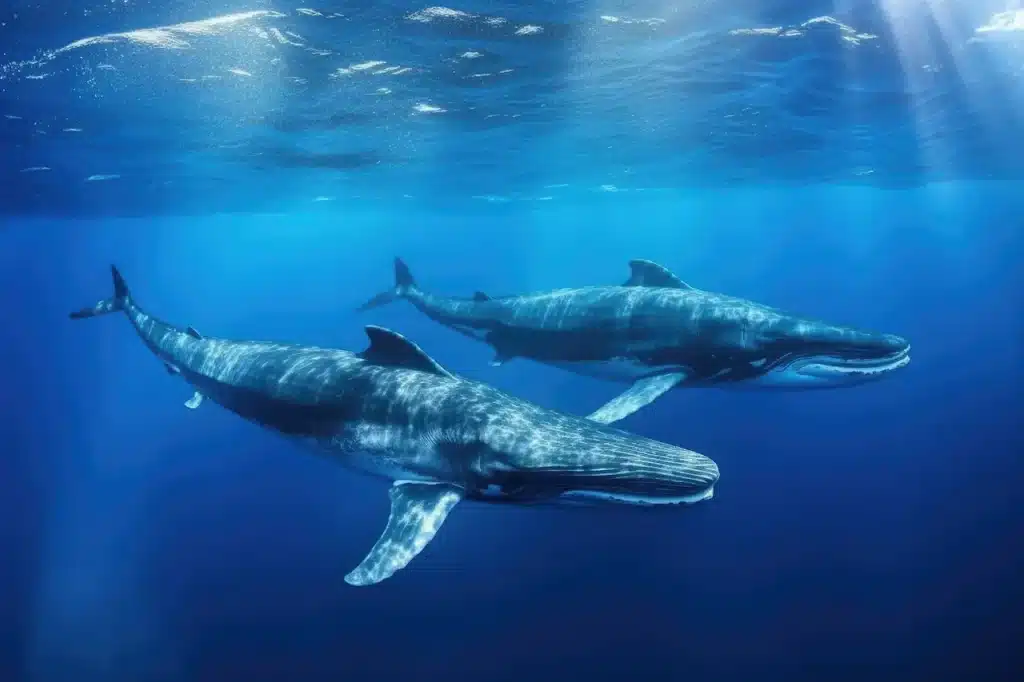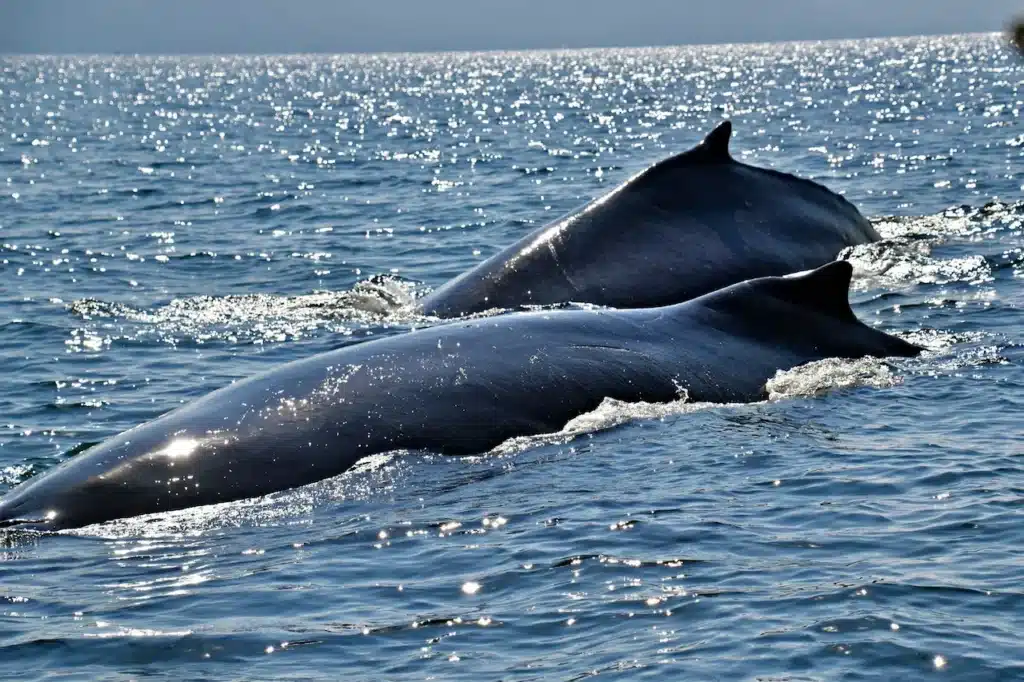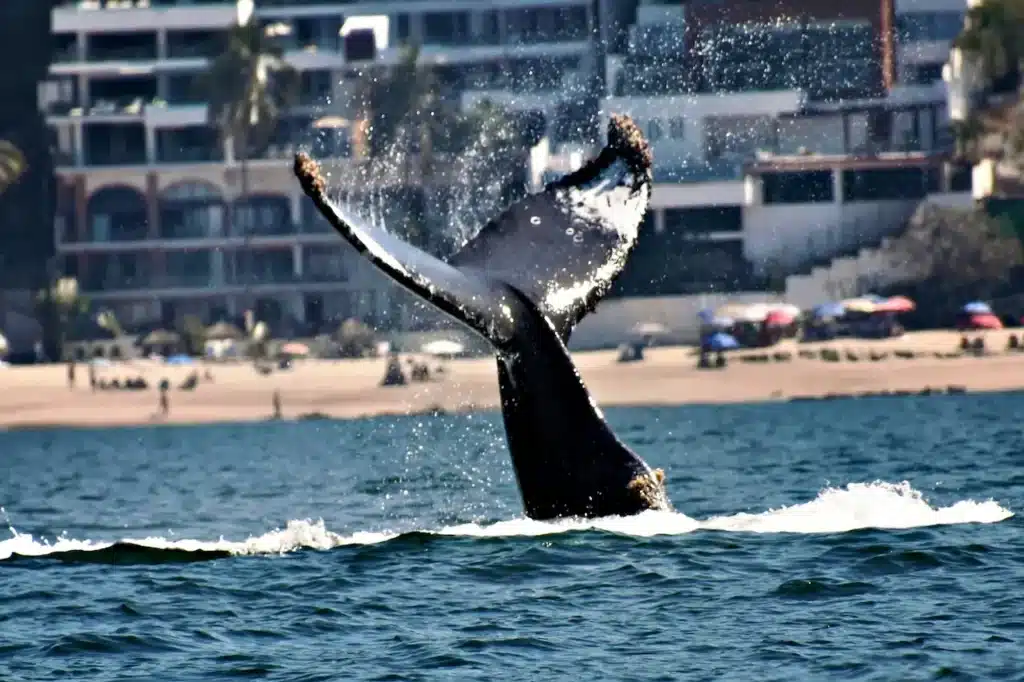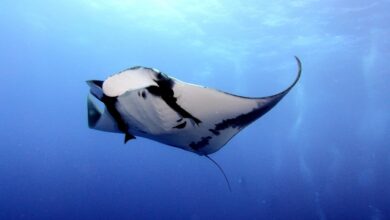Scientists have finally solved the mystery of how whales produce their iconic, haunting sounds, revealing that the blue whale can emit calls as loud as 180 decibels louder than a jet engine and powerful enough to travel hundreds of miles through the ocean. These low-frequency calls are not only the loudest sounds made by any animal but are also capable of crossing entire ocean basins.
How Blue Whales communicates? Unlike humans, whales lack vocal cords and instead create these sounds using specialized structures deep in their nasal passages. By forcing air through their “phonic lips” (also called “nose lips”), which flap rapidly forwards and backwards, they generate a variety of clicks, whistles, and booming tones. This mechanism is somewhat similar to the sound humans make by snapping their lips shut but amplified to extraordinary levels.
Researchers have also discovered that whales, dolphins, and porpoises can produce clicks at three different pitches and modulate their calls to sound deep and resonant or high-pitched and squeaky. These vocalizations are vital for survival, serving purposes such as echolocation to locate prey in the vast, dark ocean, navigating their environment, and communicating complex messages across great distances to other members of their pod. Some species, like sperm whales, even use distinct “codas” or patterns of clicks that may function like dialects, hinting at a level of social complexity comparable to human language.

What is The Scientific Name of a Blue Whale?
The scientific name of the blue whale is Balaenoptera musculus. The genus name Balaenoptera translates from Latin as “winged whale,” referring to the species’ long, slender pectoral fins that resemble wings. The species name musculus carries an interesting double meaning it can mean “muscle” in Latin, but it is also a diminutive form of “mouse.” This was likely a playful pun by Carl Linnaeus, the scientist who named the blue whale, as he ironically gave the name “little mouse” to the largest animal ever to have lived on Earth.
The Science Behind Whale Communication
Whales have one of the most sophisticated sound production systems of any animal, using anatomical structures which are very different from terrestrial mammals. Whales don’t have vocal cords, but instead produce sound through complex air-recycling systems in their nasal passages. They can vocalize underwater even when they are holding their breath. This is essential for the life of the ocean depths.
The phonic lip, or “monkey lips”, is an important part of their sound production. They are a pair folds located in the nasal cavity which vibrate when air is forced through them. The melon is a dome-shaped, fatty organ found in the front of toothed (sperm and dolphin) whales. The melon is an acoustic filter that focuses and directs sound waves with incredible precision. Baleen whales such as blue and humpback whales lack a melon, but they have other adaptations to enable them produce their low-frequency songs and moans.
This results in a wide variety of sounds ranging from whistles and clicks to deep resonant vocalizations. The low-frequency sounds, such as those made by blue whales, are able to travel a great distance, up to 1,000 miles, because they lose very little energy when moving through the water. Whales can communicate with each other across ocean basins and maintain contact.
Blue whales are the loudest mammals on Earth. Their calls can reach up to 180 decibels, which is louder than a jet. The powerful vocalizations of blue whales not only help them navigate and locate prey via echolocation, but they also play a role in social interactions, such as coordinating movements within groups, attracting mates and strengthening social bonds. Scientists think that some species have “dialects”, or signature songs. Humpback whale songs are one example. They evolve over time, like cultural traditions.

Blue Whales Communicate With Each Other
Blue whales form strong bonds among themselves and with other whales. The blue whales have the loudest calls of all animals, reaching up 188 decibels. However, the sound is so low that it’s difficult to hear for humans. You may be surprised to learn that blue whales communicate thousands of miles away using low-frequency sounds. Blue whales may be able communicate with other whales but their life is pretty lonely. These magnificent creatures rarely travel together. If they do, then it’s usually with 2 to 3 individuals for a very short period of time. The mother will take care of her young for a year before they leave to live independently.
A blue whale’s singing is different from that of male Humpback Whales. They create their own sounds, which are crucial in communicating with the other whales on their migration. Other blue whales can hear their sounds from miles away. Blue whales are typically solitary creatures, but their complex communication is necessary for them to build bonds across vast oceans and over time.
What Does A Whale Sound Like?
People are often surprised to find out that there is no one answer when they ask “What does the whale sound like?” Whale vocalizations include a wide range of sounds, from clicks and whistles up to haunting songs. Each is as distinct and as purposeful as the words we use in our language. These sounds are a reflection of the complexity and diversity of their underwater environment, serving multiple functions from navigation to social interaction.
Clicks
Clicks is one of the most common and practical types of whale call. These rapid, sharp pulses are like biological sonar and allow whales to “see their environment” through echolocation. If someone asks “Do whales communicate using sonar?” the answer is nuanced. While echolocation is used primarily for navigation and hunt, the timing and patterns of clicks may also provide information to nearby whales.
Whistles
Whistles show the social aspect of whale communication. These melodic tones, which are frequency modulated, are used in close proximity interactions between pods. They may be used as contact calls or names. Researchers suspect that some whale species may also use “signature whistles”, which act as personal identifiers.
Songs
Songs are the most complex and fascinating whale vocalizations. This is especially true for humpbacks. These complex compositions are repeated over and over again for up to 30 minute. Humpback songs are composed of distinct phrases, themes, and rhythmic patterns. They evolve over time to spread across populations, like memes. The only males known to sing are those who have a strong desire to reproduce, either to attract mates or challenge other males. Some researchers think that singing may strengthen social cohesion.
These pulsed sounds add an emotional dimension to whale communication. These sounds can range from grunts and modulated moans to expressions of excitement, aggression or distress. They are heard when whales are interacting with each other, such as during group hunting or mother-calf interactions. These calls reveal a level emotional complexity that rivals terrestrial mammals.
“Do whales sing?” opens a fascinating world to cetacean music. The male humpback whales are undisputed masters of the art, but blue whales, fin whales, and even dolphins can produce rhythmic, deep pulses that travel hundreds, or even thousands, of miles. This is a testament to low-frequency sounds in water. These acoustic masterworks, which are sometimes audible above the water’s surface to humans, are not just impressive, but essential for survival in an environment where sound is the dominant sense.
Blue Whales Are Endangered.
The blue whale is listed as Endangered on the IUCN Red List, following decades of intensive commercial whaling in the 19th and 20th centuries that drove their populations to the brink of extinction. Though international bans on whaling have allowed their numbers to recover slowly, blue whales remain vulnerable. The global population is estimated at around 10,000–25,000 individuals, but some subspecies are in more critical condition. For example, the Antarctic blue whale (Balaenoptera musculus intermedia) is classified as Critically Endangered, with only a few thousand individuals surviving.

Threats to Blue Whales
Blue whales face several modern threats despite the ban on whaling. Noise pollution from ships, sonar, and industrial activities disrupts their communication and navigation in the ocean’s depths. Ship strikes are another significant hazard, as these massive animals often surface near busy shipping lanes. Climate change poses a long-term threat, altering the distribution of krill their primary food source and impacting their feeding and breeding grounds. Additionally, entanglement in fishing gear remains a concern in some regions. Conservation measures, such as ship speed restrictions and protected marine areas, are critical for mitigating these threats.
Where can you find blue whales?
Blue whales inhabit all major oceans of the world except the Arctic, where sea ice limits their range. These migratory giants undertake some of the longest journeys in the animal kingdom, traveling thousands of miles between cold, nutrient-rich feeding grounds in high latitudes and warmer breeding areas closer to the equator. For example, populations in the North Atlantic migrate to the Caribbean, while those in the North Pacific travel to the waters off Mexico and Central America.
Blue whales are classified into several subspecies based on their geographic distribution and slight genetic differences. The Antarctic blue whale is found in the Southern Ocean surrounding Antarctica but may occasionally venture into the Indian Ocean and eastern tropical Pacific. The pygmy blue whale (Balaenoptera musculus brevicauda), a smaller subspecies, inhabits the Indian Ocean and southwestern Pacific Ocean.
Conclusion
Blue whales are a true wonder of nature. From their size and communication to their feeding habits, they are truly awe inspiring. They are the largest mammals to ever have lived on Earth and they represent the diversity and adaptability that life has in our oceans. The richness of marine eco-systems and the interconnectedness of all life are emphasized by their haunting songs, migration records, and presence. Blue whales are vulnerable to human activity despite their resilience and strength.
They face threats such as ship strikes, entanglement in ropes, climate change and noise pollution. We all share the responsibility of protecting these gentle giants, and the fragile habitats on which they depend. We can protect the future of blue whales by learning more about them and sharing their stories. We can all work together to ensure these ocean giants thrive so that future generations will be able to marvel at their beauty, and hear their song echoing through the seas.




